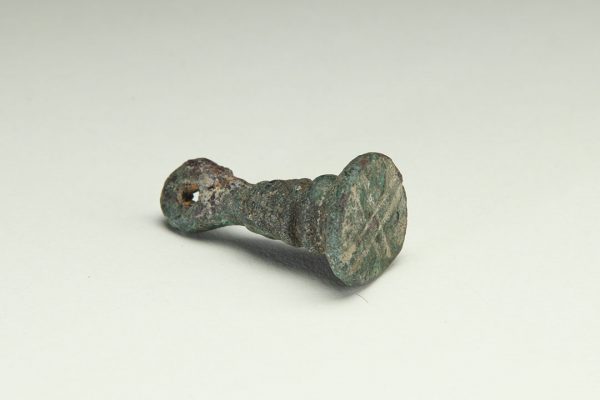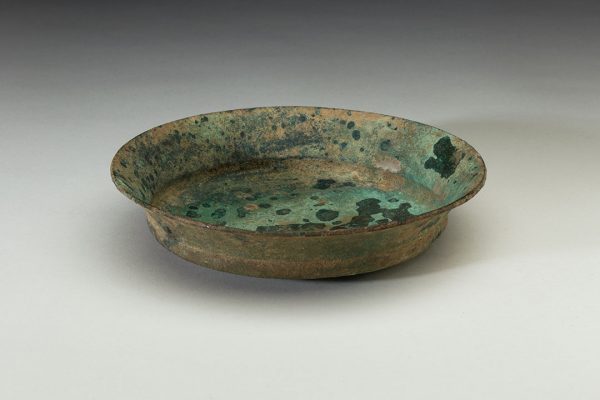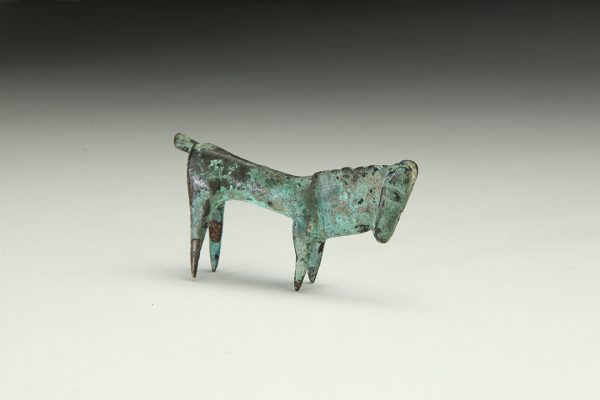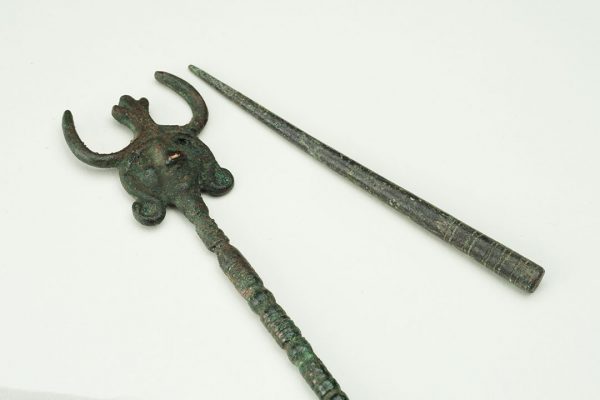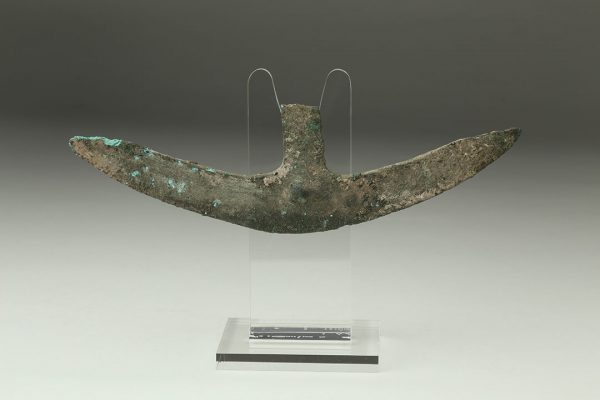LOST ART: Ancient Iranian Bronzes in the Union College Permanent Collection
January 22nd – March 25, 2018
Curated by Sarah Mottalini, Curatorial Assistant of Art Collections & Exhibitions
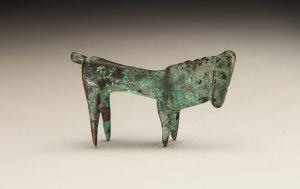
Near Eastern Bronze Culture, Northwestern Iran (Luristan?), Equine figurine, copper alloy, 1300-650 BCE?, gift of Carl and Gail George, Union College Permanent Collection, 1996x.1.40.2 UCPC
Union College’s Permanent Collection of art and artifacts includes an uncommon and exceptional collection of bronze weaponry and horse fittings from ancient Iran, generously donated by Professor Emeritus Carl George. This exhibition will feature the majority of the collection, which is representative of the famed but ill-fated Luristan bronzes that have intrigued and confounded museum curators, scholars, and archaeologists since the 1920s when they began to show up on the European and American art markets.
A rich, stylistically unparalleled metalworking industry, with a main period of production from 1300/1250 to 700/650 BCE, emerged from the formidable Zagros mountain region of northwestern Iran. The “canonical Luristan bronzes” were formed using the lost-wax casting process and include many object types that are indigenous to the region and incorporate the unfamiliar and bizarre iconography that distinguishes and renders the Luristan tradition so recognizable.
Union College is fortunate to possess a collection of nearly one hundred objects allegedly from this unusual oeuvre of ancient Iranian archaeology. Although spike-butted axes and decorated halberds are not among Union’s holdings, the College does have many of the typical Lur weapon types, including a mace, an adze, a plain halberd, tanged daggers, swords, and spearheads, as well as two examples of the later 2nd millennium BCE innovation of single cast, flanged daggers. Union holds several Luristan-style pins, as well as one decorated with the grotesque head of the human bull character that figured so prominently in the Luristan canon. Our collection also includes several of the rather peculiar pendant types for which Luristan is known, including a stamp seal, several miniature fruit cage bells, and model ceramic vessels. In terms of horse fittings, Union has a good sampling including a double-twisted wire snaffle bit, a pair of gently curved, bridle bit cheek pieces, various bridle ornaments, bells, and even a striking quadruped figurine, likely a horse or a Persian onager, the native equine of Iran.
– Sarah Mottalini, Curatorial Assistant of Art Collections and Exhibitions
This exhibition is generously co-sponsored by Schaffer Library.
Where?
Schaffer Library
1st Floor, Lally Reading Room
Union College, 807 Union St. Schenectady, NY 12308
Curator's Talk & Reception
Tuesday, January 30th, 2018
12:55 – 1:45 PM
Schaffer Library, Lally Reading Room

